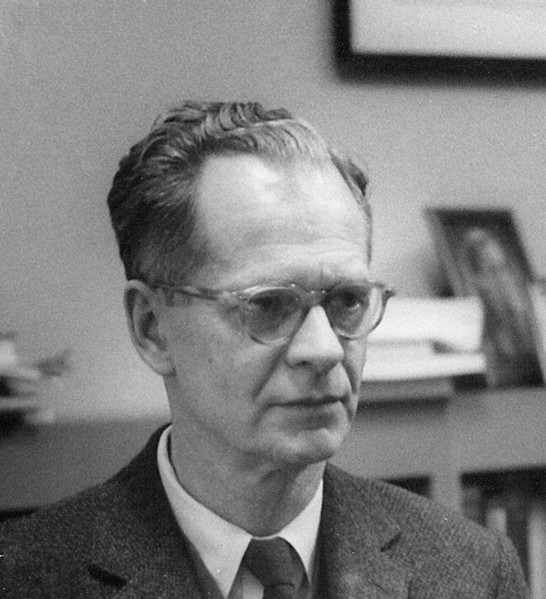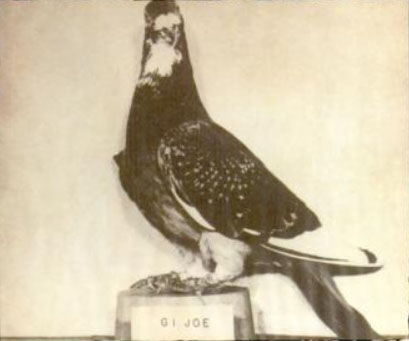Pigeons aren’t birds known for their skill, their intelligence, or even their friendly demeanor. To most people, pigeons are nothing more than a bird seen on every building’s roof, in every park, roaming cities everywhere. However, pigeons have done more for both history and the American military than many other furry or feathery creatures – in the midst of World War II, it was pigeons who joined the ranks of humans, giving their lives to stop German forces.
That’s right – as unbelievable as it sounds, pigeons were part of the war. Though they didn’t serve in the traditional sense, they aided and guided American missiles to their intended targets. In 1943, the U.S. military was struggling to land its missiles and bombs upon German targets.
Accuracy was merely a dream, as most missiles were fired from a great distance away from the sites of impact. The U.S. military needed to improve their accuracy quickly, and B. F. Skinner had the solution: pigeons.
F. Skinner was quite familiar with pigeons, and knew just how much they could offer the U.S. war effort. As a psychological researcher, Skinner often used pigeons in his studies, both observing their behavior and training them in new ways. In one such research study, Skinner trained pigeons to press a lever whenever they wanted food.

Yet psychology wasn’t his only field of fascination; Skinner was also an avid inventor. For quite some time during World War II, Skinner considered ways in which the weapons targeting systems used by the military could be improved. Inspiration struck one day when a flock of birds flew over Skinner, in a perfectly arranged formation, as he remarked: “Suddenly I saw them as ‘devices’ with excellent vision and extraordinary maneuverability. Could they not guide a missile? Was the answer to the problem waiting for me in my own back yard?”
With his vast knowledge of pigeons and their behavior, Skinner knew these ever-present birds could help guide American missiles more accurately, helping to execute more precise bombings and air strikes. He decided to take advantage of pigeons’ excellent eyesight and calm demeanor under stress by allowing them to lead a missile to its target. Skinner crafted a nose cone that would slide over a missile, atop of which sat three tiny pigeon cockpits. Inside each of these minuscule cockpits were three electronic screens and room for the birds themselves.
Skinner crafted a nose cone that would slide over a missile, atop of which sat three tiny pigeon cockpits. Inside each of these minuscule cockpits were three electronic screens and room for the birds themselves.
Before placing the pigeons inside their cockpits, Skinner used his psychological background to train them. He taught average street pigeons to recognize a target and to begin pecking whenever they saw it. That pecking motion was what guided and directed the missiles; cabling attached to the pigeons’ heads inside their cockpits would mechanically move the missile as they pecked.

Despite this ingenious invention’s benefits, it did feature two drawbacks: the pigeons had to accompany each missile to its detonation, and many in the U.S. military didn’t take it very seriously. Once the pigeons were placed inside their missile cockpits, there was no way for them to escape during the last seconds before the weapon struck; luckily, pigeons were a prevalent bird and viewed as a common pest by many. Skinner, in fact, was more frustrated that so few thought his pigeon-led invention truly deserved to be used widely in war.
Skinner decided to present his pigeon missile plans to the National Research Defense Committee, and, although the Committee was highly skeptical, “Project Pigeon” was put into action with a mere $25,000 in funding.
In 1944, just a single short year after Project Pigeon began, military officials terminated the program. Skinner’s pigeons weren’t unsuccessful – during Project Pigeon’s run, he showed officials how easily the pigeons could be trained, and demonstrated their flawless guiding skills.
However, military leaders just did not want to spend precious funds or resources to get Project Pigeon off the ground. The American military believed that expending energy and necessities required to win the war against Nazi Germany into Project Pigeon was simply too much of a risk to take.
Though disappointed in the lack of support Project Pigeon received, Skinner did not end his career with this small failure in 1944. Instead, he went on to continue his career in psychology and scientific research, achieving countless accolades as one of the most important and influential in his field.
Today, Skinner is not remembered as the man who developed the pigeon-guided missile; rather, his psychology colleagues remember him as the scientific mind who popularized behaviorism, which became a cornerstone concept of psychology.
Interestingly, the Pigeon Project did not disappear into the realms of history. Though it was short-lived, its unique and innovative nature made it memorable – and it was given a second chance in 1948, thanks to the U.S. Navy.
Renamed “Project Orcon,” the pigeon-guided missile was brought back to life for five years to help the Navy guide their weapons. It was canceled a second time not because it proved futile or unsuccessful; instead, electronic guidance systems were becoming reliable and more commonly used in the military, and there was no longer a need for pigeon aid. Although the pigeons proved helpful and effective, just as Skinner originally intended, they lost their place in military efforts when technology took control.
However, the pigeons Skinner trained never lost their target-guiding abilities. When the Pigeon Project first ended in 1944, he kept the pigeons. Every so often, Skinner gave them a test, interested to see if the skills he’d taught them would quickly be forgotten.
Surprisingly, the pigeons always passed his tests – they maintained and were able to recall their target-driven responsibilities, their minds and memories sharp enough for battle as many as six years after their initial training.
